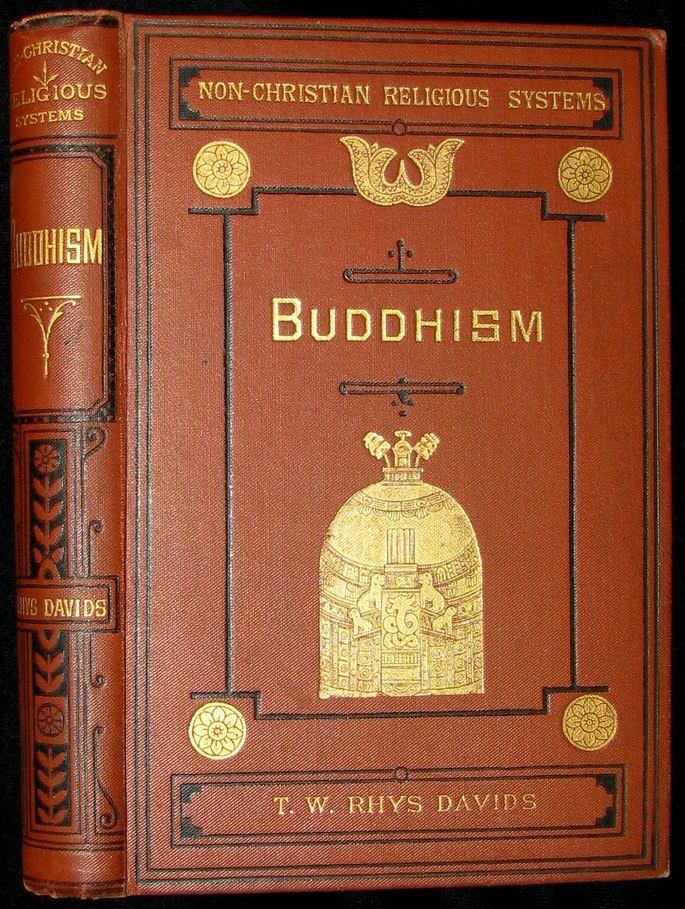|
|
|
|---|

| ชื่อผู้แต่ง | Thomas William Rhys Davids |
| ประเภท | เอกสารวิชาการ |
| ประเด็นสำคัญ | ศาสนา |
| จำนวนหน้า | 252 หน้า |
| ภาษา | อังกฤษ |
| ปี พ.ศ. | 2455 |
| ปี ค.ศ. | 1912 |
| สำนักพิมพ์ | Society for Promoting Christian Knowledge |
| สถานที่พิมพ์ | London |
| ลิงก์ | ลิงก์หนังสือ |
Chapter I.--Introduction.
Statistics of Buddhism, 3; of other religions, 6; extent of the subject and limits of this work, 8; sources of information, 9; authorities relating to the life of Gautama, 11; estimate of their value, 15.
Appendix: List of the Pitakas, 18; Size of the Pitakas, 19.
Chapter II.--The Life of Gautama (part I.).
The Aryans in the sixth century B.C., 22; the Sakiyas, 25; Gautama's birth, 26; birth of his son Rahula, 30; he abandons his home, 31; studies under the brahmins, 33; his self-mortification, 34; he gives up penance, and his disciples desert him, 35; the temptation, 36; the victory, the attainment of Buddha-hood, 39; the after-doubt, 41; his meeting with Upaka, 42; reception by his former disciples, 43; the foundation of the Kingdom of Righteousness, 45; the first sermon, 47; the first converts, 49.
Appendix: Gautama's wife and relations, 50.
Chapter III.--The Life of Gautama (part II.).
The first lay disciples, 53; sending out the sixty, 55; the season of was, 57; conversion of Kasyapa, 58; sermon on fire, 59; return to Rajagriha, 61; Bimbisara's gift of Veluvana, 62; the Savaka Sannipata, 63; discontent of the people, 63; return home, 64; interview with his father, 65; interview with his wife, 66; Rahula admitted to the Order, 67; other accessions to the Order, 68; the gift of Jetavana, 69; chronicle of the ministry, 70; Dewadatta, 75; Gautama's last days, 77; Buddhism and Brahminism, 83.
Chapter IV.--The Essential Doctrines of Buddhism.
The Pitakas, our oldest authority, 86; ultimate facts, 87; the Skandhas, 90; Buddhism denies the existence of the soul, 93; transmigration, 99; Karma, 101; the Four Truths, 106; the Four Paths, 108; the Ten Fetters, 109; Nirvana, 110.
Appendix: Passages in which Niravana is mentioned, 120.
Chapter V.--Buddhist Morality.
the Fruit of the Noble Path, 124; Buddhist Beatitudes, 125; The True Treasure, 127; Scripture verses, 128; Parable of the mustard-seed, 133; Parable of the Sower, 134; other parables, 135; Summary of Lay Duty from the Dhammika Sutta, 137; the Ten Sins, 142; the Sigalovada Sutta, 143; concluding remarks 148.
Chapter VI.--The Order of Mendicants.
Cause of the foundation of the Order, and its results, 150; Scripture verses, 153; Form of admission to the Order, 158; Rules of the Order as to food, 163; Residence, 164; clothing, 165; poverty, 166; obedience, 168; daily life of the mendicants, 169; summary, 170; Jhana, 174.
Chapter VII.--The Legend of the Buddha.
The Buddhas, 179; miraculous birth of Gautama, 182; Prophecies Regarding the Child, 183; the holy child, 184; The Chakravarti Parallel, 188; Wonders at Gaytama's Death, 189; the legend as sun-myth, 190; local legends, 194; the Buddha as Catholic saint, 196; the Buddha as the Man in the Moon, 197.
Chapter VIII--Tibetan Buddhism.
Theory of the Buddhas, 199; Manjusri, 201; Avalokitesvara, 203; Vajrapani, 203; the Dhyani-Buddhas, 204; Adi-Buddha, 206; the Tantra system, 208; praying wheels and flags, 210.
Chapter IX.--Spread of Buddhism.
Date of Gautama's death, 212; the First Council, 213; the Second Council, 215; Chandragupta, 220; Asoka, 222; the Third Council, 224; Asoka's missionaries, 226; Mahinda, 228; Sanghamitta, 230; the Bo tree, 231; the Pitakas reduced to writing, 233; Buddhaghosha, 235; Java and Sumatra, 236; Kanishka, 237; Kanishka's Council, 238; Chinese Buddhism, 240; the Korea and Japan, 241; Chinese pilgrims, 242; Buddhism expelled from India, 245; the Lamaism of Tibet, 246.
หนังสือที่สมเด็จฯ กรมพระยาดำรงราชานุภาพทรงอ้างถึงในงานพระนิพนธ์เมื่อกล่าวถึงที่ตั้งของดินแดนสุวรรณภูมิ